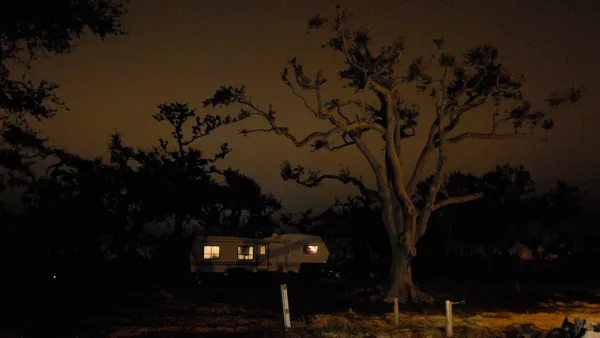"Buyers value the dollar per square foot, and the builder responds by delivering as many square feet of conditioned space as possible for $X. If he can deliver 100 more square feet than the competition, most buyers think it's a better value." -Ron Jones, Green Builder Magazine, in The Washington Post.
"Buyers value the dollar per square foot, and the builder responds by
delivering as many square feet of conditioned space as possible for $X.
If he can deliver 100 more square feet than the competition, most
buyers think it's a better value."
-Ron Jones, Green Builder Magazine, in The Washington Post.
That was then (2007), this is now. As housing prices hit bottom, there's a general sense that home building can't go back to business as usual when the market recovers. And one of the first things that will have to change is the idea that square footage is the sole arbiter of value. As The Christian Science Monitor reported in January, the "McMansion Trend In Housing Is Slowing."
The question becomes, how can we build efficient, smaller homes that people will find value in? I'll be exploring that issue with some excellent panelists at CNU 17 this Friday, as we discuss "Smart, Sustainable and Economical: Homes for the New Era." Marianne Cusato has been exploring this idea since developing a Katrina Cottage in the wake of the hurricane. If you attended our recent webinar with Marianne, you know that she is passionate about returning housing to a more realistic, affordable, and well-designed form. In preparing for the panel, I've been impressed with Marianne's ability to tackle all the issues, from sustainability to density and around to value and quality.
Steve Mouzon and Andrés Duany don't need much introduction, as both have been highly prominent in the practice of New Urbanism since its inception. Through the New Urban Guild, Steve is now working on a refinement of the idea they're calling a "SmartDwelling." Here's what Steve has to say about the panel:
My part of this session will focus on the New Urban Guild's
SmartDwelling Project. SmartDwelling I was just featured along with
three other designs on the cover of the Wall Street Journal's special
section on sustainability. SmartDwellings are substantially smaller
than yesterday's bloated McMansions, but they live large, largely in
part due to what the Guild is calling Smaller & Smarter Principles.
SmartDwellings are also highly sustainable on several counts,
calibrating their sustainability to each region of the country.
I hope you'll get a chance to join us this Friday at 4:15pm at CNU17 in Denver. As a Planetizen reader, I'd like to give you the opportunity to let me know what you think we should ask this august panel. Send your questions to me at [email protected].

Analysis: Cybertruck Fatality Rate Far Exceeds That of Ford Pinto
The Tesla Cybertruck was recalled seven times last year.

National Parks Layoffs Will Cause Communities to Lose Billions
Thousands of essential park workers were laid off this week, just before the busy spring break season.

Retro-silient?: America’s First “Eco-burb,” The Woodlands Turns 50
A master-planned community north of Houston offers lessons on green infrastructure and resilient design, but falls short of its founder’s lofty affordability and walkability goals.

Test News Post 1
This is a summary

Analysis: Cybertruck Fatality Rate Far Exceeds That of Ford Pinto
The Tesla Cybertruck was recalled seven times last year.

Test News Headline 46
Test for the image on the front page.
Urban Design for Planners 1: Software Tools
This six-course series explores essential urban design concepts using open source software and equips planners with the tools they need to participate fully in the urban design process.
Planning for Universal Design
Learn the tools for implementing Universal Design in planning regulations.
EMC Planning Group, Inc.
Planetizen
Planetizen
Mpact (formerly Rail~Volution)
Great Falls Development Authority, Inc.
HUDs Office of Policy Development and Research
NYU Wagner Graduate School of Public Service




























